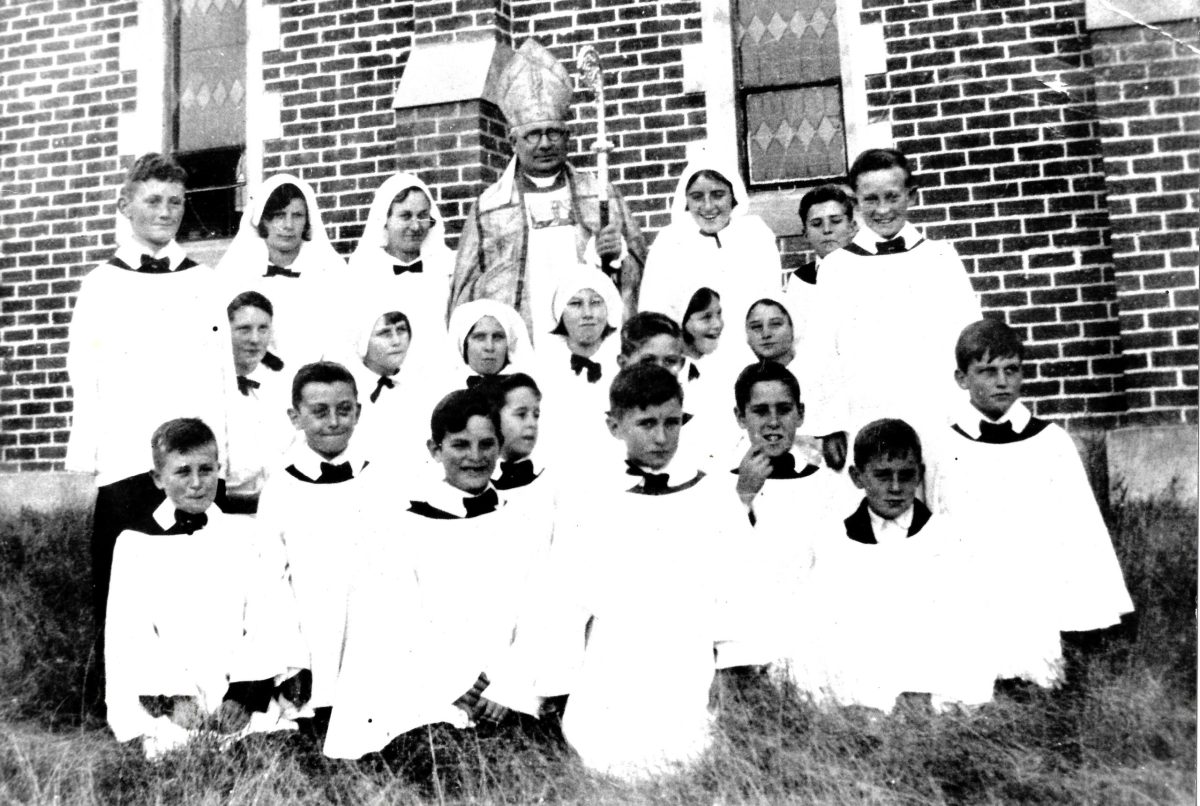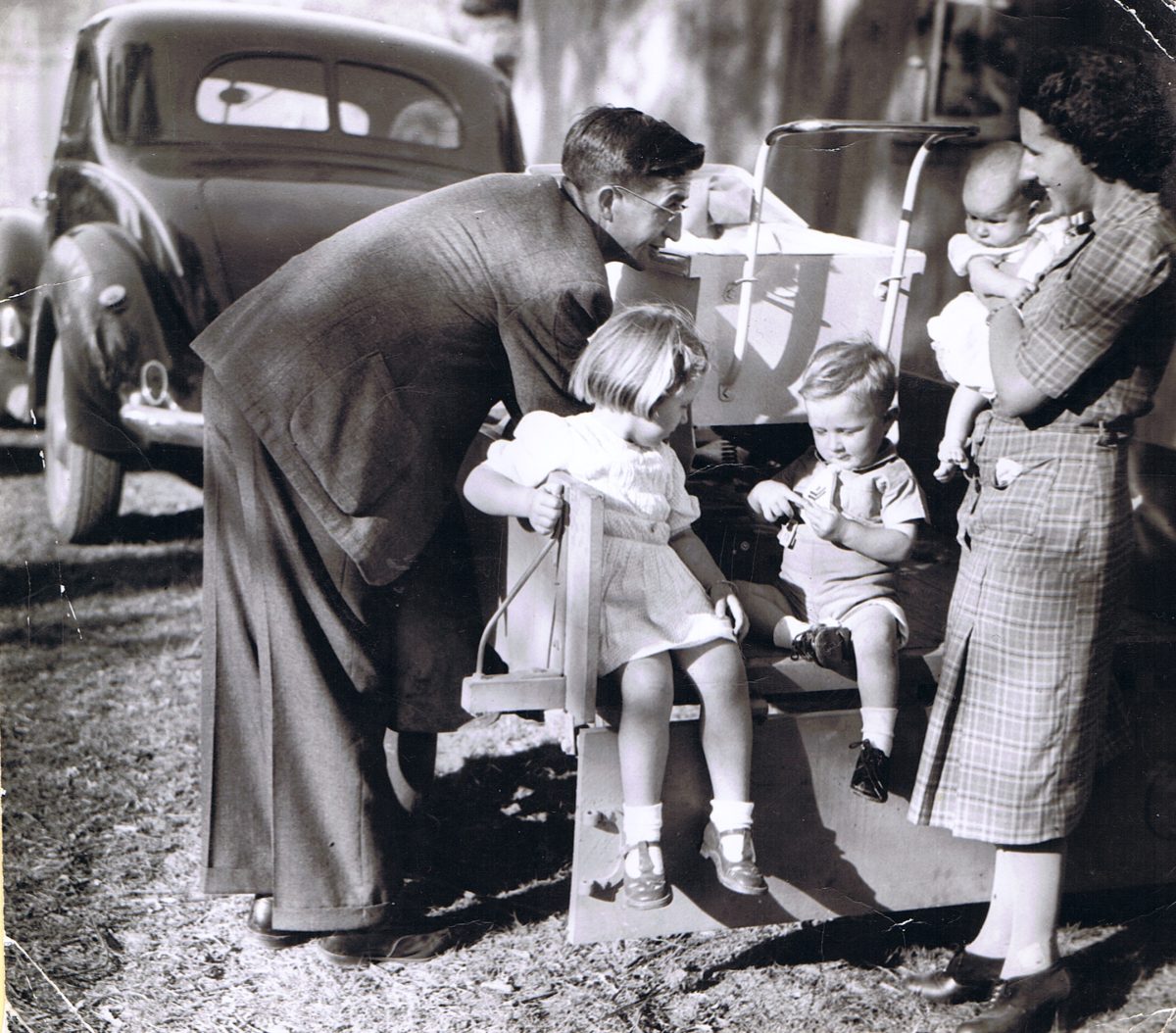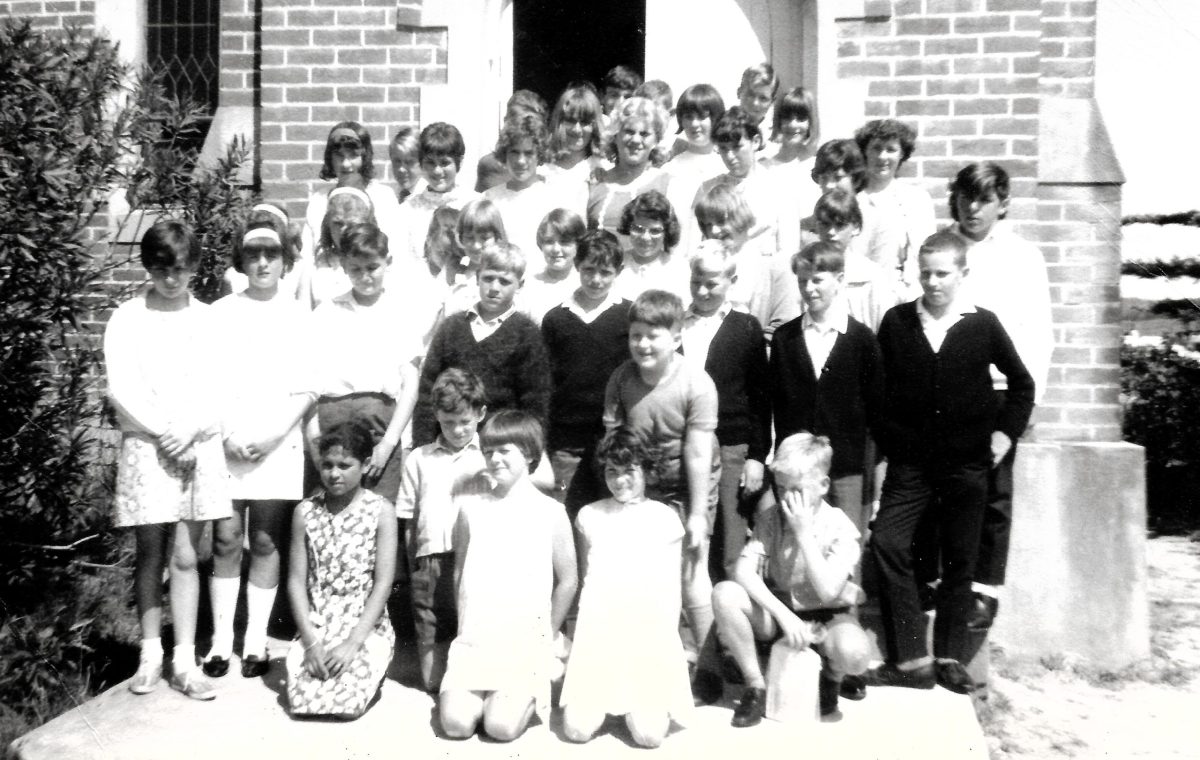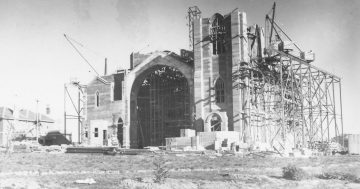
Confirmation at Christ Church Cobargo, thought to be 1955. Photo: Supplied.
Today Cobargo has plenty of quirky, talented and warmhearted characters. The ministers who have served the community over the years are equally interesting. Some were pioneers in their field and many were involved with the RFS.
In the lead up to the centenary of Cobargo’s Anglican Christ Church, Fiona Kotvojs researched the history of the building and the ministers’ lives.
Cobargo’s first Anglican church was built in 1881, 52 years after grazier W D Tarlinton first set foot in the area. The timber church was short-lived, destroyed by white ants. The Catholic church in Quaama and another in Tilba suffered similar fates.
Cobargo realised it needed a new church in 1907 but it took years to get it. In 1917 they contracted Bill and Lot Stafford to make the bricks. Later that year the Red Cross held a big sports festival in the area. At the festival young men were encouraged to join the war effort. The Stafford brothers enlisted on the proviso they could delay their mobilisation by six weeks to finish making the bricks.
There was another lull until a woman, Mrs Harris, became chair of the church building committee. Work began in earnest in 1923 and Christ Church was dedicated on 14 August, 1924.
Ms Kotvojs said even before then Cobargo had several ministers who were incredibly socially-minded. They had set up programs far ahead of their time in the cities for the very poor. “Some troubled the bureaucracy and I am sure they were sent here as Cobargo was considered extremely isolated but they continued their focus here,” Ms Kotvojs says.

Frederick Dau and his wife at a church picnic in 1945/46 with his modified car in the background. Photo: Supplied.
The minister and members of the Church of England and Baptist church, for example, were concerned about the living conditions of the Aboriginal community at Wallaga Lake. In 1898 they wrote to and then made the arduous journey to Sydney to meet MPs and visit Parliament House. They successfully advocated for more food and other support for the community.
During World War II when petrol was scarce, Frederick Dau modified his car to run on charcoal. It made such a tremendous noise that it scared children as it trundled across Cuttagee Bridge visiting parishioners.
In the devastating bushfires of 1952 Minister David Orange helped Max Otton to fight the fire on his property. “Max and David sheltered in the creek and Mrs Otton leapt into the spring and was very badly burnt,” Ms Kotvojs says. “She stayed in town to recover and he and his wife cared for her.”
David Ballard was the church minister during the 1968 drought. The farming community was in difficulty and church income was very poor, so they could not afford to pay for a minister. Mr Ballard returned to his original line of work as a telephone technician. “He fixed telephones and lines in the area full-time and did the weekly service and funerals instead of paying rent at the rectory where he lived,” Ms Kotvojs says.
“A paper has been written about it because it was the first of its kind in Australia where the minister worked in his career while still ministering without pay. In some ways it was much better because sometimes people didn’t want to go to church but if he was there fixing their telephone they would talk to him and he could support them in a different way,” she says. He also ran a healing ministry which one woman claimed cured her son of multiple sclerosis.

Children at Sunday school at Christ Church in Cobargo in the late 1960s. Photo: Supplied.
The minister in the 1970s and 1980s, John Burnett, was a former prison chaplain, while Gail Tabor became the church’s first female minister in 1992. “Eleven women were being trained in this diocese but there was a court injunction so only the men were ordained and the women remained deacons.” Soon after, the injunction was overturned. “Gail was in that first group of women who went through ordination.”
There are some sad stories too. Ministers who came from England, never to see their families again. Others lost all their children to sickness or injuries. The wife of one minister committed suicide.
Over the years additions have been made to the church including a hall where for some years they ran Telecare. “A lot of people on farms were very isolated so the group would ring them,” Ms Kotvojs says. “It was like a proactive Lifeline to chat and check things were OK.”
Anyone who has a link with Christ Church is encouraged to come to the centenary celebration on 11 August. Morning tea at 9:30 am will be followed by a church service, tree planting and unveiling of a memorial. For more information contact Ms Kotvojs on 0448 453 422 or fiona@kurrajonghill.com.au
Original Article published by Marion Williams on About Regional.













